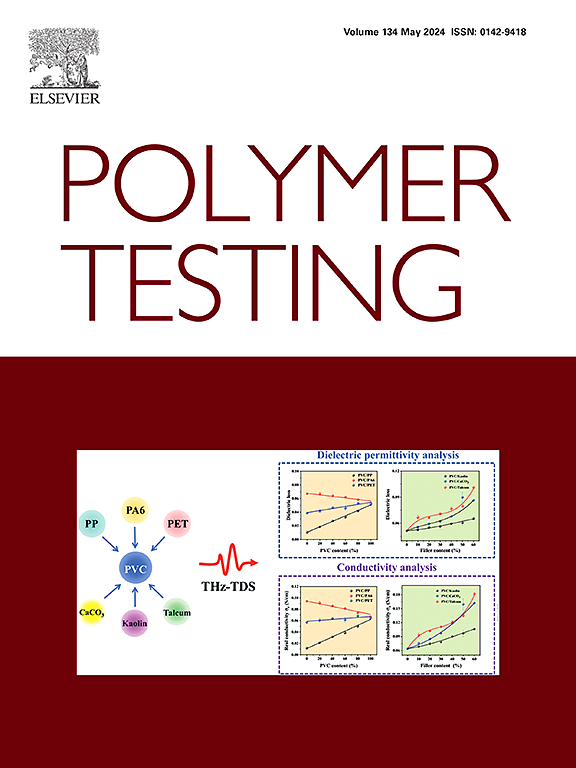一种用于聚乙烯双轴拉伸过程实时监测的新型张拉架装置
IF 6
2区 材料科学
Q1 MATERIALS SCIENCE, CHARACTERIZATION & TESTING
引用次数: 0
摘要
聚合物薄膜的双轴拉伸通常发生在半固态,涉及沿两个主要方向施加剪切和拉伸力场,是几种应用中的常见技术。为了了解加工条件对最终性能的影响,在整个拉伸过程中监测晶体结构和取向的发展至关重要。虽然关于PE材料单轴加工的文献相当多,但对双轴取向聚乙烯(hope)薄膜加工的研究较少。鉴于设计双轴装置的复杂性和昂贵的性质,文献中存在几种潜在的解决方案。然而,这些大多不能满足现场调查的需要。本手稿的目的是开发一种具有成本效益的设备,可以在聚乙烯浇铸板样品的双轴拉伸期间进行原位分析。在125°C的拉伸测试中,在LLDPE预制板材样品上进行了原位小x射线散射(SAXS)分析,证明了这种设计装置的潜力。本文章由计算机程序翻译,如有差异,请以英文原文为准。
A novel tenter-frame device for real-time monitoring during biaxial stretching of polyethylene
Biaxial stretching of polymeric films, which typically occurs in a semi-solid state, involves the application of shear and elongational force fields along two main directions and is a common technology in several applications. To understand the effect of the processing conditions on the final properties, it is crucial to monitor the development of the crystal structure and orientation throughout the stretching process. While there is considerable literature on the uniaxial processing of PE materials, only a small number of research studies have been conducted on biaxially oriented polyethylene (BOPE) film processing. Given the complex and costly nature of designing biaxial devices, several potential solutions exist within the literature. However, most of these do not meet the needs of in-situ investigations. The objective of this manuscript has been the development of a cost-effective device that enables in-situ analysis during biaxial stretching of polyethylene cast sheet samples. The potential of the so-designed device has been demonstrated by carrying out in-situ small X-ray scattering (SAXS) analysis during stretching tests at 125 °C on an LLDPE pre-cast sheet sample.
求助全文
通过发布文献求助,成功后即可免费获取论文全文。
去求助
来源期刊

Polymer Testing
工程技术-材料科学:表征与测试
CiteScore
10.70
自引率
5.90%
发文量
328
审稿时长
44 days
期刊介绍:
Polymer Testing focuses on the testing, analysis and characterization of polymer materials, including both synthetic and natural or biobased polymers. Novel testing methods and the testing of novel polymeric materials in bulk, solution and dispersion is covered. In addition, we welcome the submission of the testing of polymeric materials for a wide range of applications and industrial products as well as nanoscale characterization.
The scope includes but is not limited to the following main topics:
Novel testing methods and Chemical analysis
• mechanical, thermal, electrical, chemical, imaging, spectroscopy, scattering and rheology
Physical properties and behaviour of novel polymer systems
• nanoscale properties, morphology, transport properties
Degradation and recycling of polymeric materials when combined with novel testing or characterization methods
• degradation, biodegradation, ageing and fire retardancy
Modelling and Simulation work will be only considered when it is linked to new or previously published experimental results.
 求助内容:
求助内容: 应助结果提醒方式:
应助结果提醒方式:


